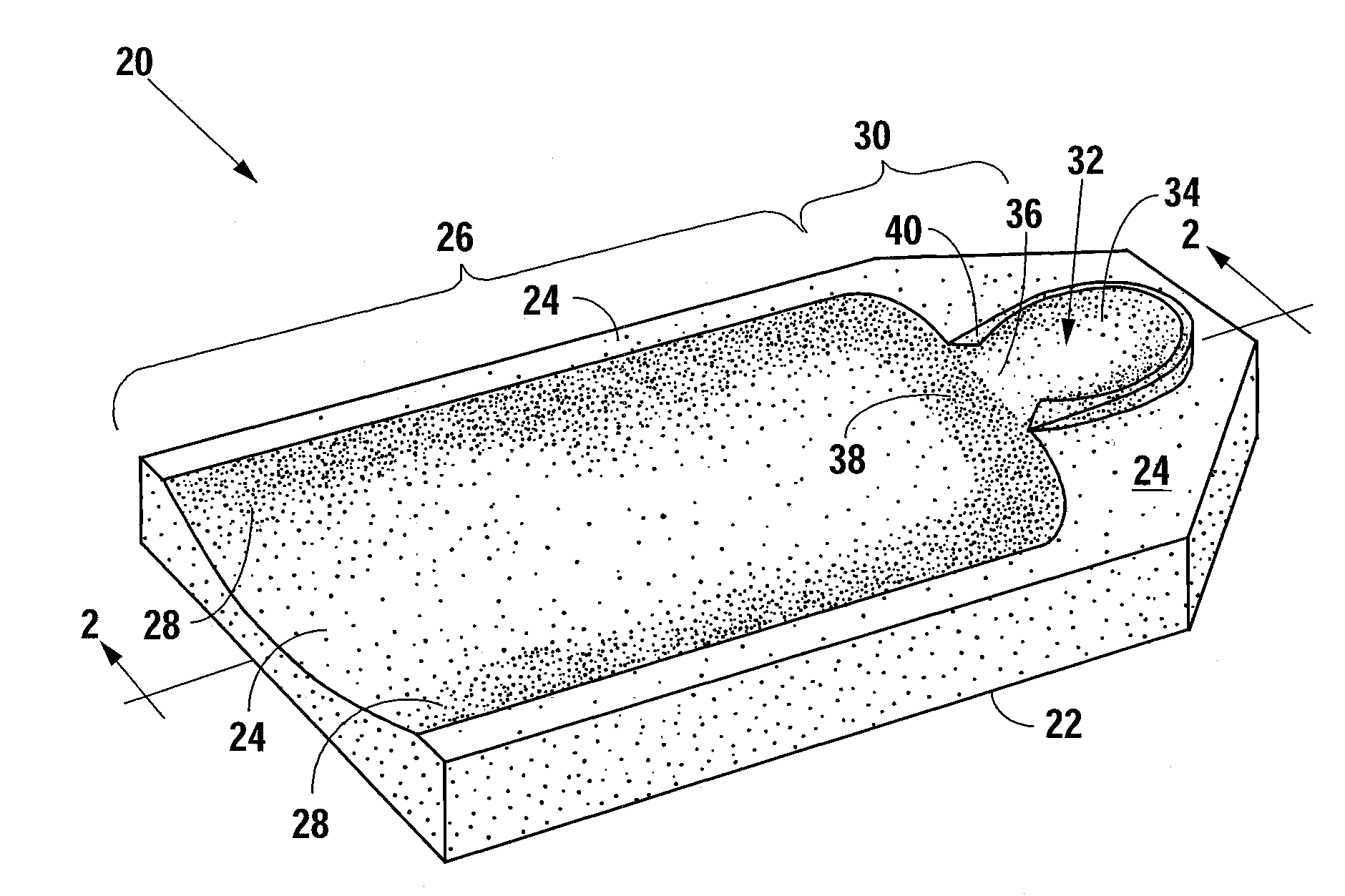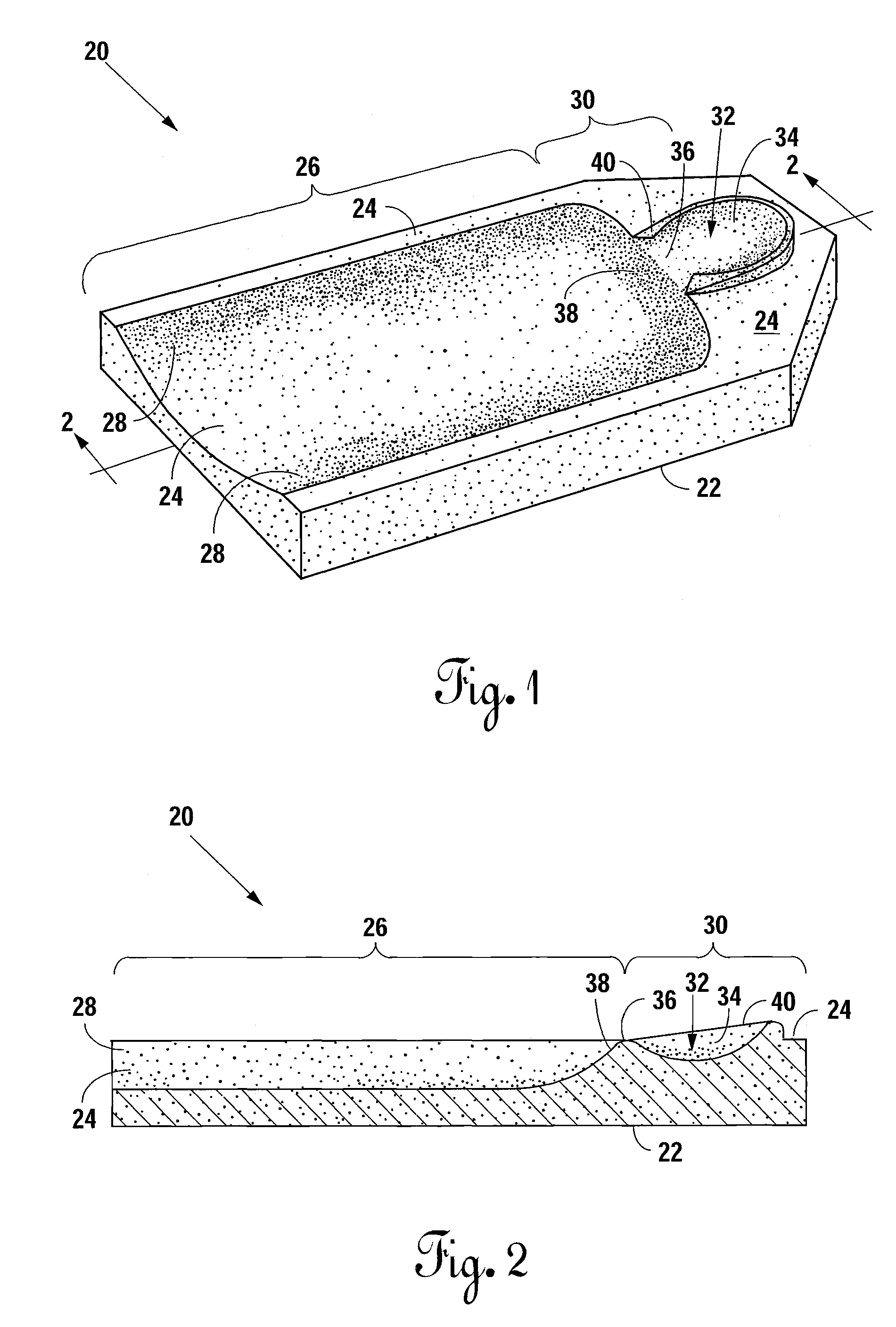Mattress Incorporating a Headrest for Preventing and Correcting Non-Synostotic Cranial Deformities in Infants
a technology of cranial deformation and mattress, which is applied in the field of mattress incorporating a headrest, can solve the problems of infants being most susceptible to the formation of synostotic or non-synostotic deformations, increasing head size, and increasing the risk of brain damage, so as to prevent abnormal shaping of the cranium of infants, maintain the overall shape, and minimal superficial focal elasticity
- Summary
- Abstract
- Description
- Claims
- Application Information
AI Technical Summary
Benefits of technology
Problems solved by technology
Method used
Image
Examples
Embodiment Construction
[0040]FIGS. 1, 2 and 3 depict the preferred embodiment of present invention, which is a mattress incorporating a headrest for preventing and correcting non-synostotic cranial deformities in infants.
[0041]FIGS. 1 and 3 show a perspective view of the mattress 20. FIG. 2 illustrates a sectional view of the preferred embodiment along section line 2-2 of FIG. 1.
[0042]As shown in FIGS. 1, 2 and 3, the mattress 20 comprises a bottom surface 22 and a top surface 24. A body portion 26 of the top surface 24 of the mattress 20 is concave and has raised sides 28 to prevent an infant lying on the mattress 20 from rolling or moving from the infant's sleeping or resting position, as shown in FIG. 3. A headrest portion 30 of the mattress 20 further comprises a generally hemi-ellipsoidal depression 32 in the top surface 24 that corresponds to the shape of a normal infantile cranium. A semi-rigid surface 34 of the depression 32 is resilient, and preferably made of self-skinning foam. A ridge 36 is ad...
PUM
 Login to View More
Login to View More Abstract
Description
Claims
Application Information
 Login to View More
Login to View More - R&D
- Intellectual Property
- Life Sciences
- Materials
- Tech Scout
- Unparalleled Data Quality
- Higher Quality Content
- 60% Fewer Hallucinations
Browse by: Latest US Patents, China's latest patents, Technical Efficacy Thesaurus, Application Domain, Technology Topic, Popular Technical Reports.
© 2025 PatSnap. All rights reserved.Legal|Privacy policy|Modern Slavery Act Transparency Statement|Sitemap|About US| Contact US: help@patsnap.com



